Analysis
Kenny Schachter Deals in Difficult Times at Frieze New York and the Auctions, Part I
Reality, in the art world, keeps proving better than fiction.
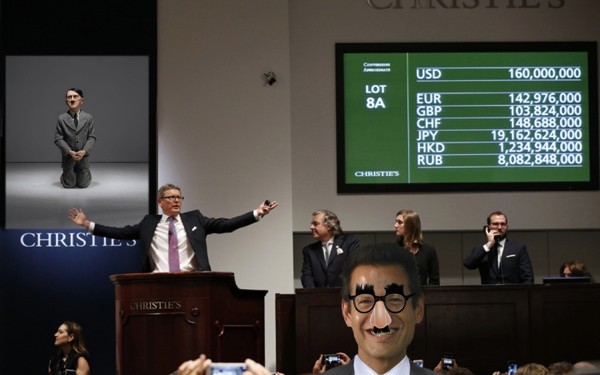
Reality, in the art world, keeps proving better than fiction.

Kenny Schachter

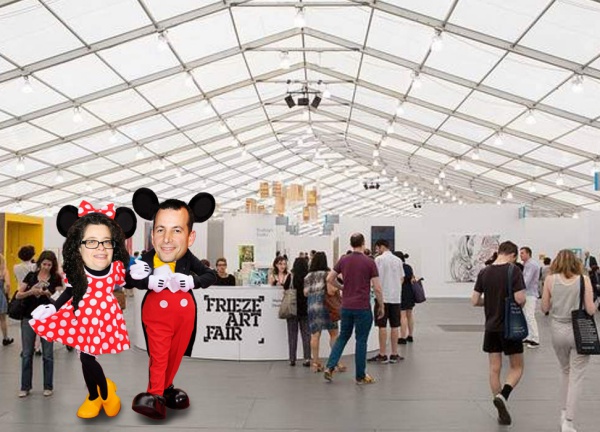
Collage by Kenny Schachter. Image: Courtesy of Kenny Schachter
Dealing in Difficult Times
All eyes are on the auction spectacle in New York, a market barometer maybe never as scrutinized in such transitional, tumultuous economic times. The month of May is when the art world resets its clock, a Greenwich Mean Time centered neither in the United Kingdom nor China, but rather in the unforgiving aisles of Christie’s and Sotheby’s.
Covering the enormity of the week and implications of the fallout is daunting but you just have to scruff the cat and get on with it. The jittery climate is further fueled by press like Bloomberg and the New York Times projecting (ever mounting) dark clouds of doom and gloom days before the sales; but casting a pall over the proceedings prior to when they unfold makes news and satisfies a human instinct to relish slips and falls (of others).
As I suspected things got off to a raucous start, within the new world order we reside in that is. But show me any business thriving besides a select few—hedge funds and commodities are in the toilet (more on commodes to come) and a lot of international real estate is fast becoming illiquid, even in centers like New York and London. The “2/20” hedgie model of taking two percent managing fee regardless of performance on top of 20% of profits (when they used to make them) no longer smells the same as when funds skyrocketed in the past.
Art is more Bildungsroman, an organic ball (more on those too) of knowledge evolving morally and psychologically in spite of itself, a social, political, economic worldview expressed through creativity. It’s also a mature market that will easily overcome the ebbs and flows of any business cycle with little or no resistance. Fine art (a curious term) is in a remarkable age of ascendancy in terms of widening appeal. How that translates into better business or more importantly, profits is a whole other can of encaustic. I’m remarkably sanguine; what choice do I have? Art chooses us. But once it does, it sinks its teeth.
Since there’s so much to cover, I will break this down into two installments. And not to bait you, but the second part is (already) as tantamount to titillation as anything I’ve ever written. So please come back for more…
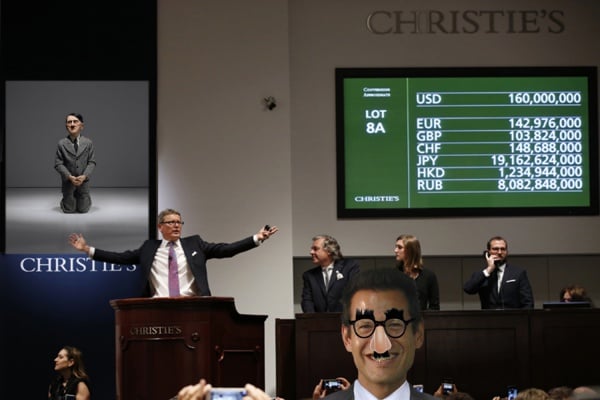
Collage by Kenny Schachter. Image: Courtesy of Kenny Schachter
Let’s Make a Deal
Heading over the Atlantic, work started on the plane where I pitched the sale of a painting across another kind of aisle before we ascended to 30,000 feet. With no net access on British Airways for nearly eight hours there’s no choice but to do it manually, face to face. Though no deals are the same most employ deferred payment, whether spelled out or simply not paid in a timely fashion—call it ex post facto terms.
It’s not easy to make money generally but I can’t remember when it was so difficult, for me anyway. More so for Los Angeles gallerists Doug Christmas, now operating under third party bankruptcy administration and Perry Rubenstein who was arrested for nonpayment of proceedings from art sales. Then there is Norwegian figurative painter Odd Nerdrum, who is facing imminent jail time for tax fraud—these are choppy waters, indeed.
Wellington Wimpy was the penny-pinching con artist from the 1929 comic strip Popeye and hamburgers were his favorite food. In 1932 his tagline went from: “Cook me up a hamburger. I’ll pay you Thursday.” To the now famous, “I’ll gladly pay you Tuesday for a hamburger today.” What is now the sacred hymn of the art world when it comes to acquisitions, I will buy it now and gladly pay you Tuesday…six months from now.
Art is a fickle business with fickle relationships where some people can’t relate no matter how many millions at stake—call it seething contempt. The level of ingenuity when it comes to consummating a deal in spite of this transcends inspiring. One friend had his Russian housekeeper masquerade as a dealer, slightly afield of the normal course of her duties, to close a sale with his archenemy. Another pal who guaranteed a handful of auction lots had a doppelgänger pose for him at a pre-sale cocktail party like Maurizio Cattelan used to do with staged stand-ins for interviews and lectures, to avoid personal contact.
The old §1031 (under the United States Internal Revenue Code) defers recognition of capital gains upon sale, and hence any taxes otherwise due by the exchange of like property. Aside from tax avoidance/deferral, it’s yet another excuse for nonpayment of sales—oh, sorry my client hasn’t ponied up—she’s stuck in the middle of a 1031 swap. Yeah, right. Another component of a shaky market is the non-production of promised art for sale. When the Rudolf Stingel offer goes the way of the Donald Judd, i.e. into the ether, you know we are in for a bumpy ride.
Then there is the HSBC defense, namely, that the bank is so inept it’s nothing more than their fault for the delinquency of the overdue payment you’re owed (and re-owed) for months on end. If the bank was as bad as one dealer bemoaned, they’d be as bankrupt as Doug Chrismas. One upside of the downside is the only immediate flip left is on Matisse, like one I sold on behalf of a client to a gallery only to see it pop up at a fair in a heartbeat. Though I was admittedly taken aback, as was my seller.
An addendum: a Saudi collector popped into Gogo in London recently with a coterie of armed bodyguards and ended up buying two giant Dan Colen chewing gum artworks; when the gum begins to delaminate and drop to the floor, will they return to the gallery guns blazing?
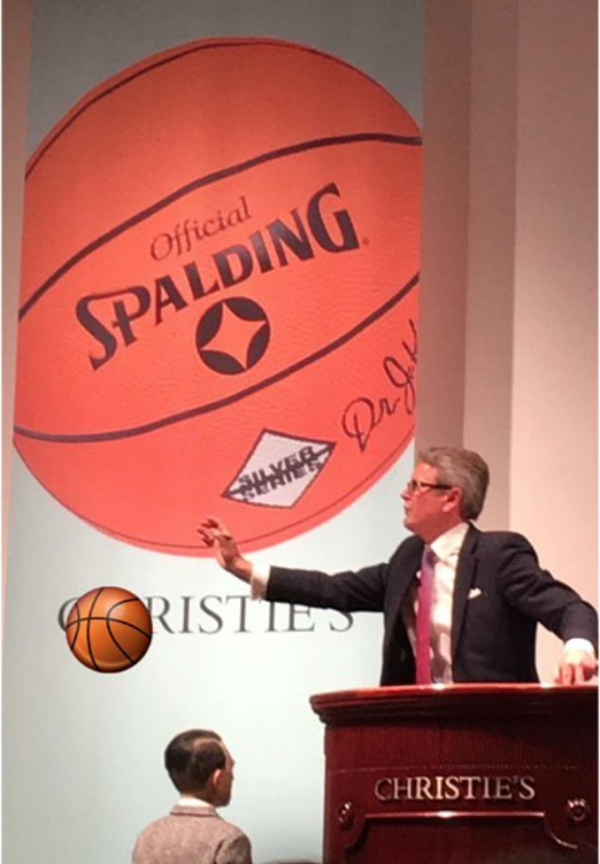
Collage by Kenny Schachter. Image: Courtesy of Kenny Schachter
Deloitte’s 9th Art & Finance Conference Co-Organized with the Van Gogh Museum Amsterdam
I don’t know if this is the best thing I’ve heard or something else. A tiresome retort about investing in paintings is that they don’t kick off a dividend other than visual, but now everyone’s clamoring to loan money on private collections worth more than a trillion dollars, with another trillion in institutions, the not-for-profit equivalent of junk bonds. I learned all of this (and more) participating in a panel a few weeks ago.
In the more traditional sense, Falcon Fine Art Financing looks to the creditworthiness of borrowers while Athena Art Finance Corp. loans on art alone, to the extent they circulate a list of upcoming auction lots they predetermined to be creditworthy. Nifty, where do I sign?
What’s next you may be wondering (or not)? Why, that would be art-backed securities, the equivalent of financial derivatives à la The Big Short. Would you rather securities rooted in the art or the creditworthiness of the original debtor—the art vs. the person? For me, that would be the art, hands down. In either case, in today’s uncertain environment this phenomenon is most welcome to grease the gears. In the decades pioneering art finance, how many defaults has Sotheby’s experienced? From what I discovered only one. Leverage away!
Kai & Adrian Are Everywhere You Want to Be
I thought my ego was verging on insufferable but my kids feel compelled to stage a show at each and every turn of the art market in a city near you. Maybe they’ll hit an Asian art fair like Marc Quinn recently did and get out of my hair. As ubiquitous as they are, here you go—the work continues to develop so I’d suggest you buy some now! When I kind of appropriated an image one of them made for my Instagram (after the auctions), the ingrate blurted out obscenities on screen like a drunken sailor that never heard of Richard Prince.

Kenny Schachter’s tattoo. Image: Courtesy of Kenny Schachter
Frieze New York: It’s Showtime
This is why I don’t read fiction: WME-IMG (what was formerly William Morris Endeavor and International Management Group)—agents for Ben Affleck, James Franco (ha), Oprah Winfrey, Tiger Woods, Pete Sampras, and Martina Navratilova, among numerous others—made an undisclosed investment in Frieze with a view to scaling up the enterprise. It’s funny how the art world’s aspires to the mass proprietor of talent, Ari Emanuel, who is said to be the basis for Entourage’s Ari Gold.
So Matthew Slotover and Amanda Sharp seamlessly transitioned from unreadable magazine publishers to elitist art fair proprietors (that shunned the hoi polloi) and now aspire to be the end all platform to virtually experience art which is hard to swallow. That said, the fair was a more than pleasant light-filled tent, unlike the piers. It was easy to navigate with a wide berth and nice art to boot.
It helped that they rolled out the classic guns in turbulent times like a Brice Marden at $4.75 million and an Yves Klein at $3.5 million at Dominique Levy, a concept they might have recoiled at a short time ago. Truth be said, there were many things to fall for, and fall again. Other than Basel-Basel, the standout bar none, fairs are fungible yet I like Frieze while the owners annoy a bit.
Highlights were Roe Ethridge photographs at Kreps gallery for $20,000 a pop, Ken Price ceramics to die for, from $150,000 to $250,000 at Matthew Marks, Philip Guston’s feet fetish (Black Coast, 1977) at Hauser (about $6 million) and Jeff Elrod’s micro spray and computer print drawings from $15,000 at Max Hetzler. And there were the alluring tiny piggy paintings at Tomio Koyama Gallery, a lifer I’ve known for years, by 56 year-old Masahiko Kuwahara, a refreshing discovery.
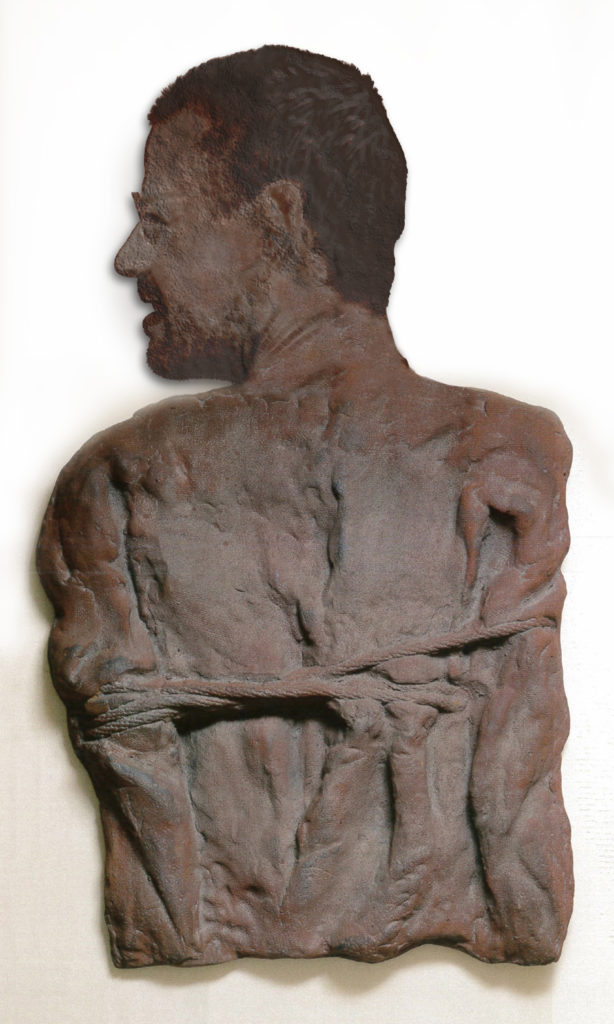
Collage by Kenny Schachter. Image: Courtesy of Kenny Schachter
Christie’s and Phillips Kick Off Spring Auction Season
Christie’s Fail sale, staged by the shark-fighting sociopath—I mean the sharp as a spear specialist!—Loic Gouzer, and titled after the Bruce Nauman sculpture Henry Moore Bound to Fail (which sold for nearly $7 million in an edition of nine in the nearly perfect auction), killed it.The enviro-activist shot this mother in the face in his most cohesive and quite brilliant thematic sale to date (of three previous attempts). Of Nauman’s cheeky title, I’m reminded of the fact there’s probably no shortage that might enjoy seeing me fall on my face, understandably so.
Until the last minute, I was almost banned from the sale (though I had covertly sorted a ticket by proxy). Its not my fault Loic has no sense of humor, we’re on the same team and I’m a fan. I got nervous envisioning being escorted out of the proceedings before my peers and considered a pair of plastic glasses with fake nose and mustache like Philippe Ségalot who was said to get professionally made up as an art handler to pre-shop Basel when there was a bum rush to buy art (oh the days). Had I done so, I’d resemble the bite-sized Hitler that was the night’s unsuspecting biggest success selling for $17,189,000 against an estimate of $10-15 million. I’d have thought the Hitler might flush down Cattelan’s new functional (solid) gold toilet he convinced the Guggenheim to premier. Ségalot’s hair by the way epically defies gravity and fluffs like a meringue cake.
At its best, art transcends and belies expectations. I am always learning and appreciative of the fact. Coupled with Jeff Koons floating basketball selling against a guarantee for a total $15,285,000, if those results aren’t indicative of a still-crazy robust market, what is?
I’d be remiss not to mention the histrionics of legendary dealer/artist Tony Shafrazi, a libertarian soul few and far between, with a dose of late-in-life Tourette’s. From Trojan Horsing the Basel fair a few years ago and staging a one person show of his own art before getting ceremoniously thrown out, he engaged in an ad-hoc heckling commentary with Christie’s auctioneer shouting about things being undervalued to more random outbursts; odd but funny. Because of his longtime standing, no one in the room blinks an eye.
Phillips had some action on a (very) few things but can only be considered to be playing a different sport than Christie’s—and even Sotheby’s for that matter—more on that in the next days.
I ended up closing the deal that fortuitously sprang from sitting next to a collector on the plane. In that sense at least, things are still flying high. And a dollop of existential dread can’t be all that bad for the art world; it keeps us on the razor’s edge. Yes, the scales of the sales were down but so what? I was elated.